Opinion Article Open Access
Diagnostic Concept for Detecting Congenital Heart Defects in the First Trimester: Principles of Pattern Recognition
| Marcin Wiechec*, Agnieszka Nocun and Dominka Stettner | |
| Gynecology and Obstetrics, Jagiellonian University in Krakow, Poland | |
| Corresponding Author : | Marcin Wiechec Chair of Gynecology and Obstetrics Jagiellonian University in Krakow 23 Kopernika Street; 31-501 Krakow, Poland Tel: +48124248423 Fax: +48124248584 E-mail: marcin_wiechec@su.krakow.pl |
| Received: September 24, 2015 Accepted: October 19, 2015 Published: October 23, 2015 | |
| Citation: Wiechec M, Nocun A, Stettner D (2015) Diagnostic Concept for Detecting Congenital Heart Defects in the First Trimester: Principles of Pattern Recognition. OMICS J Radiol 4:207. doi:10.4172/2167-7964.1000207 | |
| Copyright: © 2015 Wiechec M, et al. This is an open-access article distributed under the terms of the Creative Commons Attribution License, which permits unrestricted use, distribution, and reproduction in any medium, provided the original author and source are credited. | |
Visit for more related articles at Journal of Radiology
Abstract
Objective: In this paper we describe the technique of first-trimester cardiac evaluation that is used routinely for all nuchal scans at our institution and explain the pattern recognition concept.
Early cardiac assessment is generally performed at the time of first trimester nuchal scan. At this time of gestation, the cardiac structures are already developed and their mutual geometry is fixed as it is observed in the second trimester. Information acquired during the scan should let the examiner answer the following questions: Is the fetal heart located in the normal expected position? Is the visceral situs normal? Are the two ventricles developed? Is there a normal arrangement between both arches? Are these arches balanced in size?
|
Abstract
Objective: In this paper we describe the technique of first-trimester cardiac evaluation that is used routinely for all nuchal scans at our institution and explain the pattern recognition concept.
Early cardiac assessment is generally performed at the time of first trimester nuchal scan. At this time of gestation, the cardiac structures are already developed and their mutual geometry is fixed as it is observed in the second trimester. Information acquired during the scan should let the examiner answer the following questions: Is the fetal heart located in the normal expected position? Is the visceral situs normal? Are the two ventricles developed? Is there a normal arrangement between both arches? Are these arches balanced in size? Keywords
First trimester; Cardiac defects; Fetal echocardiography; Fetal heart; First trimester screening; Obstetric ultrasound
Introduction
For almost two decades two main screening strategies for congenital cardiac anomalies have been elaborated. The first one is aimed at visualization of cardiac views that are routinely used at mid-gestation [1,2]. The second one is based on indirect screening methods like check-up for nuchal translucency (NT) thickening, the presence of tricuspid regurgitation (TR) and abnormal ductus venosus (DV) flow velocimetry profiles [3-10] followed by diagnostic scan at early second trimester.
It was raised by Yagel in 1997, that the fetal heart affected by a congenital disease demonstrates almost the same ultrasound picture in the first, second and third trimester of pregnancy [11]. It mainly refers to the most characteristic variations of congenital heart defects (CHDs) like cases diagnosed with Hypoplastic Left Heart Syndrome (HLHS), Tricuspid Atresia (TA), Double Inlet Left Ventricle (DILV), conotruncal anomalies, Total Anomalous Pulmonary Venous Return (TAPVR), Pulmonary Artesia with Intact Interventricular Septum (PAIVS), Aortic Arch Interruption (IAA), severe forms of Ebstein Anomaly (EA), Tricuspid Dysplasia (TD), Aortic Coarctation (CoA), and clinically significant forms of Aortic Stenosis (AS), and Pulmonary Stenosis (PS). Also there are developmental CHDs like AS which may progress to the critical form and even further into HLHS [12]. However, such cases demonstrate mitral regurgitation, which is a very rarely observed phenomenon in the fetus and because of that it should draw the examiner’s attention. After years of investigation, the authors of this paper realized that diagnostic Early Fetal Echocardiography (EFE) at the time of nuchal scan is feasible. However, this method is restricted due to several crucial conditions. First, only direct fetal heart evaluation has clinical benefits. Second, owing to the limited resolution it should be only focused on identification of the most characteristic CHDs, which are at the same time the most severe. Third, patterns and striking features of abovementioned major anomalies should be well known to the examiner [13]. The aim of this paper is to explain the pattern recognition concept and to describe the technique of EFE based on this approach. The authors routinely use this technique at the time of nuchal scan and were first, who categorized early findings observed in major cardiac views. Despite many published reports on the application of EFE, this paper covers the first in literature practical manual for the assessment of abnormal fetal heart in the first trimester together with differential diagnosis. Why early fetal heart examination is important?
It is well known that cardiac defects are the most common congenital abnormalities. For diagnostic point of view early detection allows for further management planning, earlier counseling with cardiac teams and parental decision-making. However from ethical point of view all severe cardiac anomalies require confirmation at second trimester echocardiography, before any further decisions are taken. Congenital cardiac defects are these anomalies that coexist with various chromosomal aberrations. Early diagnosis increases detection rates for these pathologies. On the other hand, when EFE shows no anomalies, it also reassures parents and practitioners as early as at the time of late first trimester that fetal heart is free of most severe and common defects. However, EFE is has not been recommended yet for routine practice according to international guidelines [14].
When and how early fetal heart evaluation is performed?
Early cardiac assessment is generally recognized as the evaluation preformed below 16 weeks of gestation, but the majority of authors understand it as the cardiac scan at the time of first trimester nuchal scan [2]. At this time of gestation, the cardiac structures are already developed and their mutual geometry is fixed as it is observed in the second trimester. There are two main geometric determinants forming the developed cardiac structure: the ventricles and the arches (Figure 1).
Their relation is affected in cases of CHDs, what will be explained in this paper. The ultrasound picture of the two determinants informs the examiner about the balance between the ventricular sizes, the balance between the two fetal circulation circuits, and the relation between the great arteries. From authors’ experience transabdominal approach with the transducers frequency range approx. between 4-8 Mhz is the most all-round. Additional approaches are: transvaginal with the transducers frequency range approx. between 5-9 MHz and transabdominal by using the linear probe covering frequency range between approx. 5-10 MHz. Scanning technique
Late first-trimester fetus is usually encountered by the examiner in the transverse lie with the spine down position. This is an ideal position for the early fetal heart evaluation, nevertheless, the spine up position in the first trimester also allows for the transabdominal approach for the fetal heart. It is optimal if the application point of the transducer is kept when presenting the axial view through the fetal chest in the way that the fetal spine is shown at 6 o’clock or at 12 o’clock position. After the approach for the fetal heart was obtained, information acquired during the scan should let the examiner answer the following questions: Is the fetal heart located in the normal expected position? Is the visceral situs normal? Are the two ventricles developed? Is there a normal arrangement between both arches? Are these arches balanced in size? As it is observed in the second and the third trimester fetal heart is located predominantly in the left hemi-thorax with the cardiac axis under approx. 45 degrees to the virtual line joining the sternum with the spine [15]. Any deviation of the cardiac position or axis should be noticed (Figure 2).
In authors data the predominance of ToF cases showed severe deviation of cardiac axis to the left. Other investigators also raised it [16]. To answer the second question one may utilize various techniques. We recommend our method, which is based on the transducers rotation with the probe marker kept towards the pubic symphysis of the patient. Then, in the case of the left transverse position of the fetus, after rotation the cardiac axis and stomach should appear on the left side of the screen (Figure 3). If they are shown on the right side it means that the case is situs inversus. The described rotation causes that the well-recognized diagram used for the second trimester situs evaluation is rotated anticlockwise and may be applied for the first trimester (Figure 4). After general determining of the lateralization we recommend using a high-resolution zoom box. This technique is faster and more efficient than classical one to amend the beam angle range and depth of the ultrasound beam used in order to improve the frame rate. Successively one should activate color Doppler or bi-directional Power Doppler. It is important to be raised that this mapping should be used for the shortest possible time according to ALARA (as low as reasonably achievable) principle [17,18]. According to this rule author of this paper dedicate less than 5 minutes per scan for early cardiac evaluation in color mapping. Low values of Thermal Index were obtained in safety evaluation of EFE and they did not exceed the level of 0.5 [19]. Even on scanners older than 10 years, one should obtain diagnostic information at the level of four-chamber view (4CV) concerning the number of inflows to the ventricles, their patterns and size ratio in diastole. On the other hand in systole the function of atrio-ventricular valves is assessed. By means of delicate cephalad tilt of the transducer the level of three-vessel and trachea view (3VTV) is assessed, which demonstrates the number of arches and their size ratio seen as the arms of the "V-sign" [20]. In between 4CV and 3VTV, the level of classical three-vessel view (3VV) is assessed, which in the normal heart shows a strong color signal of the main pulmonary artery (MPA) arising more anteriorly and to the left in relation with aorta ascending (Figure 5). Left outflow tract view (LVOT) is best obtained after delicate rotation from apical 4CV on the screen or from in subcostal 4CV when the spine is seen at 3 or 9 o’clock position (Figure 6). In contrast to the second trimester fetal heart assessment, cardiac evaluation in the first trimester is mainly based on color mapping due to the lower resolution of grey scale imaging at this stage of pregnancy. Some examiners utilize split image technique. In Figure 7 we demonstrate a split image of a case of atrio-ventricular septal defect (AVSD). Patterns of cardiac anomalies in the first trimester
There is a saying among radiologists that one is able to recognize only these issues that he knows. In this context the concept of pattern recognition was developed, which is based on the early cardiac findings typical for particular anomalies. One should realize that image interpretation at the time of nuchal scan is affected by the limited resolution of ultrasound images due to the small size of the heart. Because of that the knowledge of core striking features for particular anomalies is essential for early diagnosis. In Figure 8 a case of l-TGA is demonstrated.
The first impression of early subcostal 4CV may be the underdevelopment of the right ventricle. However, by closer analysis one is able to interpret the morphology of the ventricle that is closer to the anterior chest wall. It is the left ventricle, not the right. Next to the 13-week 4CV, the same view in the same position is shown from 22 weeks scan. Without any question presented second trimester picture is typical for the pattern of l-TGA and the most striking feature is the mentioned left ventricle in the anterior position. After the addition of color mapping one can easily identify cases of uni-ventricular cardiac morphology. In Figure 9 an early-diagnosed case of HLHS is presented with corresponding images obtained in the second trimester. The same striking features are demonstrated including one inflow, and broad outflow tract with the vertical course. After reducing the color Doppler scale the retrograde flow towards the aortic arch is observed. Ventricular inflow patterns
By checking inflows to the ventricles by color mapping, an examiner is able to confirm the position of the heart. The most common reasons for an abnormal position of the heart are congenital diaphragmatic hernia, pulmonary lesions and sternal clefts (Figure 10). Next, the number of inflows should be examined. If both ventricular inflows are present one should carefully check if they are not common at the level between atria and ventricles. If this is the case AVSD is suspected (Figure 7).
Any subjectively significant disproportion between the ventricles needs to be identified. If the inflow to the ventricle that is closer to the anterior thoracic wall is larger, the examiner should perform basic differential diagnosis at the level of 3VTV in order to differentiate CoA from conotruncal anomalies. In cases presenting cardiomegaly and a diminished inflow to the dilated ventricle that is closer to the anterior thoracic wall, one should raise the suspicion of EA (Figure 11). If a single inflow is observed we recommend analyzing its shape and the location. If the shape of a singular inflow is conical and long and there is some distance from anterior thoracic wall to this ventricle the case is suspected of tricuspid atresia. The differentiation between various forms of univentricular cardiac morphology like TA, DILV and HLHS is mainly feasible in the first trimester and requires careful evaluation of 3VTV (see below). Four-chamber view patterns in systole
Systolic information obtained at the level of 4CV tells the examiner about the function of atrio-ventricular valves. If a central regurgitation jet is visualized in a case presenting initially common inflow to the ventricles it is very likely that the case demonstrates AVSD (Figure 12).
Any form of severe tricuspid regurgitation occupying more than 1/2 of right atrial chamber esp. in cases presenting cardiomegaly may be related to Ebsteins Anomaly or severe Tricuspid Dysplasia. However, right atrio-ventricular valve insufficiency may be also related to the anomaly of the right outflow tract. A small size of tricuspid regurgitation jet below 1/3 of right atrial size without NT thickening is a normal variant in majority of cases (Figure 13) [7]. Both significant tricuspid and mitral valve regurgitations indicate a severe condition of the fetal cardiovascular system especially in cases with highly thickened NT and signs of hydrops. Isolated mitral valve insufficiency is almost always considered as an abnormal finding and indicates a fetal left heart disease. V-sign patterns
The level of 3VTV is crucial for early cardiac evaluation, because the V-sign provides the indirect information about the arrangement of great vessels and direct information about the balance between the lower circuit of fetal circulation, which is dependent on the right ventricle and the upper circuit supported by the left ventricle [21]. If two arms of the V-sign are visualized in axial view and present almost equal strength of the color signal the chance of a conotruncal anomaly is unlikely. In transposed great arteries the connection between the arms is present, but it can be visualized in sagittal instead of an axial view. In d-Transposition (Figure 14), the aortic arch arm as the single arterial arm is seen at the level of 3VTV and presents convexity course originating from the anteriorly positioned ventricle [22,23].
The same sign can be observed in DORV with subpulmonary ventricular septal defect. On the other hand in l-Transposition of the Great Arteries, the picture at this level is almost similar, but the origin of the convexity arm is located in the center of the heart (Figure 15). In this condition the level of 4CV demonstrates a longer signal of inflow to the ventricle that is closer to the anterior thoracic wall mimicking right heart dominance, but in d-Transposition the pattern of ventricular inflows is normal. If a significant dominance of any of the V-sign arms in the first trimester is observed, it is almost always abnormal. The evident dominance of aortic arm may be related with pulmonary stenosis, but it can be also observed in ToF. ToF usually demonstrates a severe deviation of cardiac axis to the left at the level of 4CV, which may be likewise depicted in CAT and DORV. In some cases of ToF and DORV the pulmonary arm is hardly visible or may even demonstrate retrograde flow, which indicates the variant with pulmonary atresia. The lack of pulmonary arm with the presence of normally positioned aortic arm can be found in CAT and in PAIVS. The dominance of the pulmonary arm is usually related with aortic coarctation. Because of these variations findings at the level of 3VTV are helpful in early differentiation between the forms of univentricular morphology. HLHS, as it was raised above shows very intensive vertically oriented singular arm of the V-sign formed by the dilated main pulmonary artery and the arterial duct (Figure 9). Aortic arm is not observed at this level. Only after reducing the color Doppler scale, small amount of retrograde flow towards the aortic arch is observed at the end of the pulmonary arm. DILV also presents a singular arm of the V-sign, but its course is convex, due to the common transposed arrangement of great arteries in this condition. If the case is suspected of TA at the level of 4CV, a careful evaluation of 3VTV is necessary. A normal V-sign or the one with the dominance of aortic arm indicates the first type of TA presenting normal arrangement of great vessels. On the other hand a singular arterial arm with convexity course rather indicates type II or III of this condition. Discussion
More and more institutions are applying early cardiac evaluation to the protocol of nuchal scan. However, it is mainly focused on the B-mode evaluation of 4CV. In our opinion color Doppler assessment in the way as described above is not time consuming and provides the examiner with more complex information. To summarize facts described above the first-trimester differential diagnosis protocol is demonstrated for the most common CHDs in Figure 16.
Authors believe that this diagram will help examiners with planning the diagnostic strategy for major CHDs, which can be identified in the first trimester. The detection rate for CHDs of this method reaches 88%, which outperforms the detection rate by means of NT in combination with DV velocimetry or any other indirect methods [4,9]. However, early cardiac evaluation remains one of the most challenging elements of first trimester ultrasound screening. Owing that several questions remain to be answered. First of all, if a direct early cardiac evaluation should be implemented as a routine part of the nuchal scan. Arguments “for” support this approach and indicate that CHDs can be diagnosed earlier and this element will also enhance screening for aneuploidy. It was also raised that thanks to early cardiac evaluation parents can be assured of normal fetal cardiac morphology prior than in the 2nd trimester [2]. It plays an important role in families with history of CHDs. However “against” arguments question the possibility of proper training of examiners due to the limited number of centers experienced in early cardiac evaluation. Without any doubts, lack of proper training negatively influences on the reproducibility of early cardiac evaluation. On the contrary, in authors’ opinion early cardiac scan is less challenging from technical point of view than the visualization of a mid-sagittal view for NT measurement thanks to the improvements in ultrasound technology and better examiners’ image interpretation skills. In the past the routine application of NT was also questioned because it was recognized time consuming. Although in contemporary first-trimester ultrasound screening it has become an elementary parameter. However, the understanding of pattern recognition for cardiac anomalies in the late first trimester requires extensive expertise in diagnostic second and third trimester fetal echocardiography. This element in authors’ opinion should be recognized as the most important limitation of EFE. Due to these facts second trimester fetal echocardiography still remains crucial for prenatal diagnosis of CHDs. |
References
- Axt-Fliedner R, Chiriac A, Gembruch U (2009) First and early second trimester fetal heart scanning. Ultraschall Med 30: 364-375.
- Carvalho JS1 (2004) Fetal heart scanning in the first trimester. Prenat Diagn 24: 1060-1067.
- Westin M, Saltvedt S, Bergman G, Almström H, Grunewald C, et al. (2006) Is measurement of nuchal translucency thickness a useful screening tool for heart defects? A study of 16,383 fetuses. Ultrasound Obstet Gynecol 27: 632-639.
- Khalil A, Nicolaides KH (2013) Fetal heart defects: potential and pitfalls of first-trimester detection. Semin Fetal Neonatal Med 18: 251-260.
- Prats P, Ferrer Q, Comas C, RodrÃguez I (2012) Is the addition of the ductus venosus useful when screening for aneuploidy and congenital heart disease in fetuses with normal nuchal translucency? Fetal Diagn Ther 32: 138-143.
- Pereira S, Ganapathy R, Syngelaki A, Maiz N, Nicolaides KH (2011) Contribution of fetal tricuspid regurgitation in first-trimester screening for major cardiac defects. Obstet Gynecol 117: 1384-1391.
- Wiechec M, Nocun A, Wiercinska E, Beithon J, Knafel A (2015) First trimester tricuspid regurgitation and fetal abnormalities. J Perinat Med 43: 597-603.
- Maiz N, Plasencia W, Dagklis T, Faros E, Nicolaides K (2008) Ductus venosus Doppler in fetuses with cardiac defects and increased nuchal translucency thickness. Ultrasound Obstet Gynecol 31: 256-260.
- Wiechec M, Nocun A, Matyszkiewicz A, Wiercinska E, Latała E (2015) First trimester severe ductus venosus flow abnormalities in isolation or combination with other markers of aneuploidy and fetal anomalies. J Perinat Med .
- Martinez JM, Comas M, Borrell A, Bennasar M, Gomez O, et al. (2010) Abnormal first-trimester ductus venosus blood flow: a marker of cardiac defects in fetuses with normal karyotype and nuchal translucency. Ultrasound Obstet Gynecol 35: 267-272.
- Yagel S, Weissman A, Rotstein Z, Manor M, Hegesh J, et al. (1997) Congenital heart defects: natural course and in utero development. Circulation 96: 550-555.
- Trines J, Hornberger LK (2004) Evolution of heart disease in utero. Pediatr Cardiol 25: 287-298.
- Wiechec M, Knafel A, Nocun A2 (2015) Prenatal detection of congenital heart defects at the 11- to 13-week scan using a simple color Doppler protocol including the 4-chamber and 3-vessel and trachea views. J Ultrasound Med 34: 585-594.
- Salomon LJ, Alfirevic Z, Bilardo CM, Chalouhi GE, Ghi T, et al. (2013) ISUOG practice guidelines: performance of first-trimester fetal ultrasound scan. Ultrasound Obstet Gynecol 41: 102-113.
- McBrien A, Howley L, Yamamoto Y, Hutchinson D, Hirose A, et al. (2013) Changes in fetal cardiac axis between 8 and 15 weeks' gestation. Ultrasound Obstet Gynecol 42: 653-658.
- Sinkovskaya E, Horton S, Berkley EM, Cooper JK, Indika S, et al. (2010) Defining the fetal cardiac axis between 11 + 0 and 14 + 6 weeks of gestation: experience with 100 consecutive pregnancies. Ultrasound Obstet Gynecol 36: 676-681.
- Toms DA (2006) The mechanical index, ultrasound practices, and the ALARA principle. J Ultrasound Med 25: 560-561.
- Salvesen K, Lees C, Abramowicz J, Brezinka C, Ter Haar G, et al. (2011) ISUOG statement on the safe use of Doppler in the 11 to 13 +6-week fetal ultrasound examination. Ultrasound Obstet Gynecol 37: 628.
- Nemescu D, Berescu A2 (2015) Acoustic output measured by thermal and mechanical indices during fetal echocardiography at the time of the first trimester scan. Ultrasound Med Biol 41: 35-39.
- Lombardi CM, Bellotti M, Fesslova V, Cappellini A (2007) Fetal echocardiography at the time of the nuchal translucency scan. Ultrasound Obstet Gynecol 29: 249-257.
- Fouron JC (2003) The unrecognized physiological and clinical significance of the fetal aortic isthmus. Ultrasound Obstet Gynecol 22: 441-447.
- Menahem S, Rotstein A, Meagher S (2013) Rightward convexity of the great vessel arising from the anterior ventricle: a novel fetal marker for transposition of the great arteries. Ultrasound Obstet Gynecol 41: 168-171.
- Viñals F, Ascenzo R, Poblete P, Comas C, Vargas G, et al. (2006) Simple approach to prenatal diagnosis of transposition of the great arteries. Ultrasound Obstet Gynecol 28: 22-25.
Figures at a glance
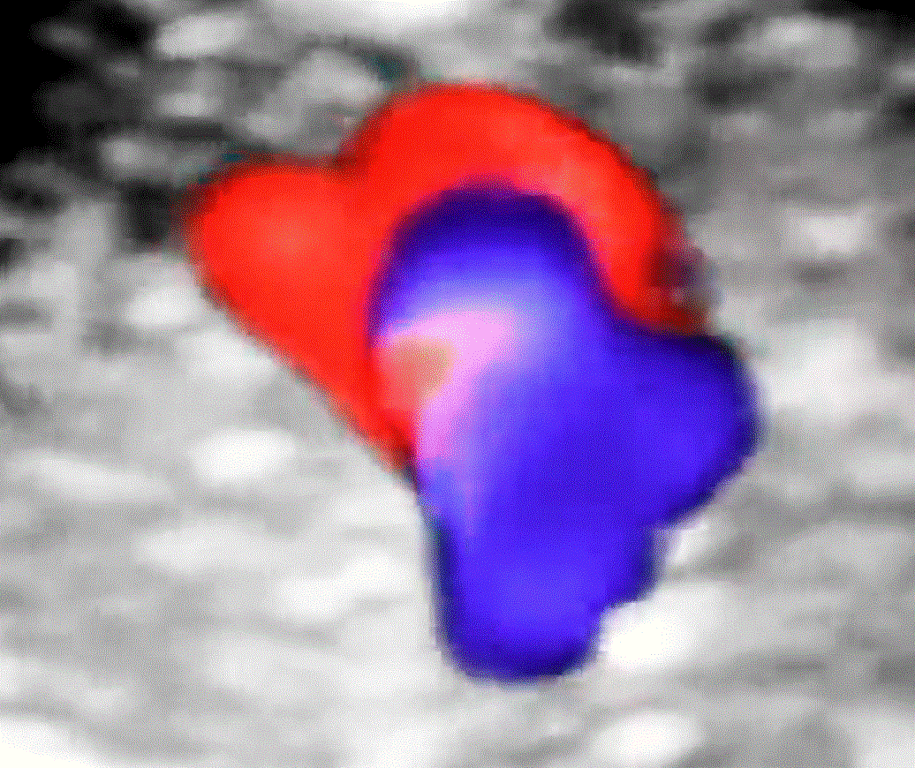 |
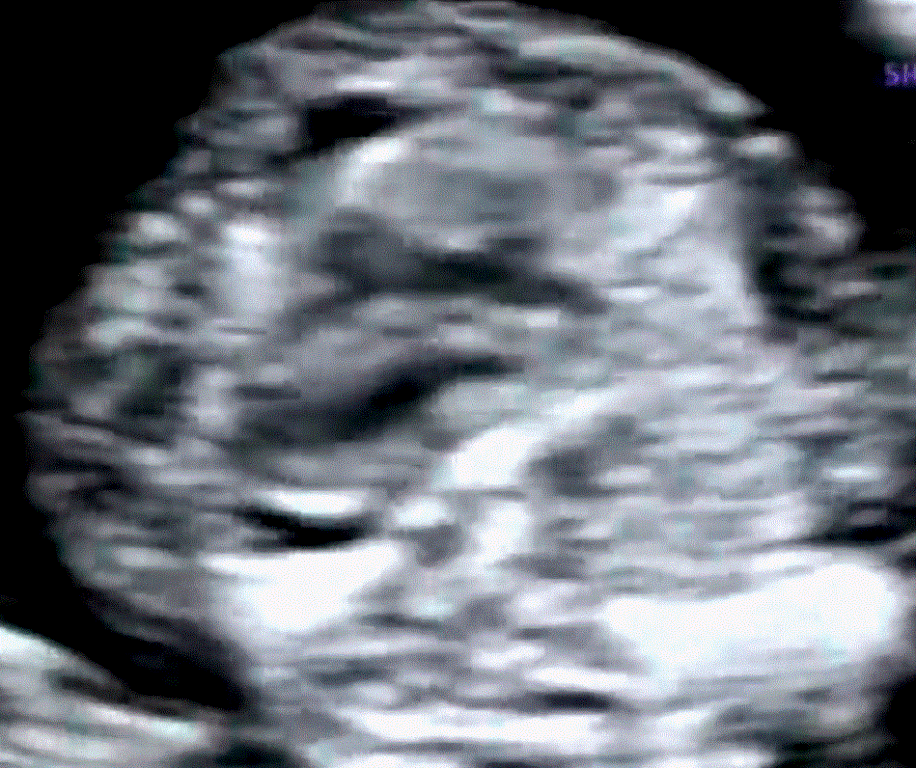 |
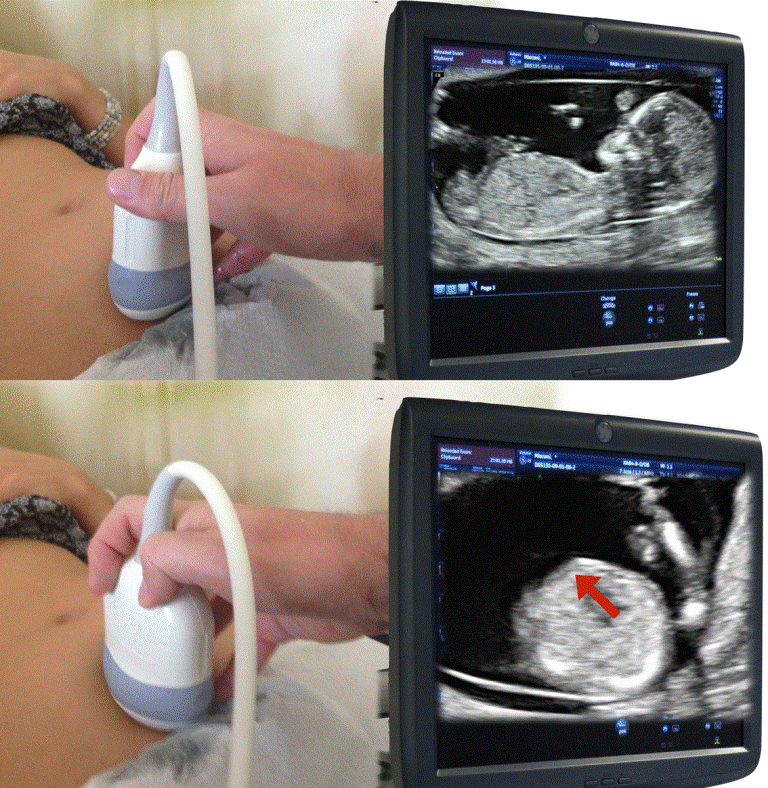 |
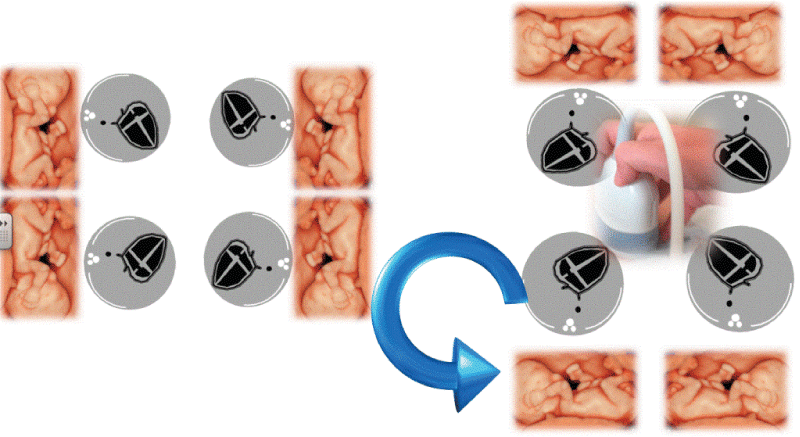 |
| Figure 1 | Figure 2 | Figure 3 | Figure 4 |
 |
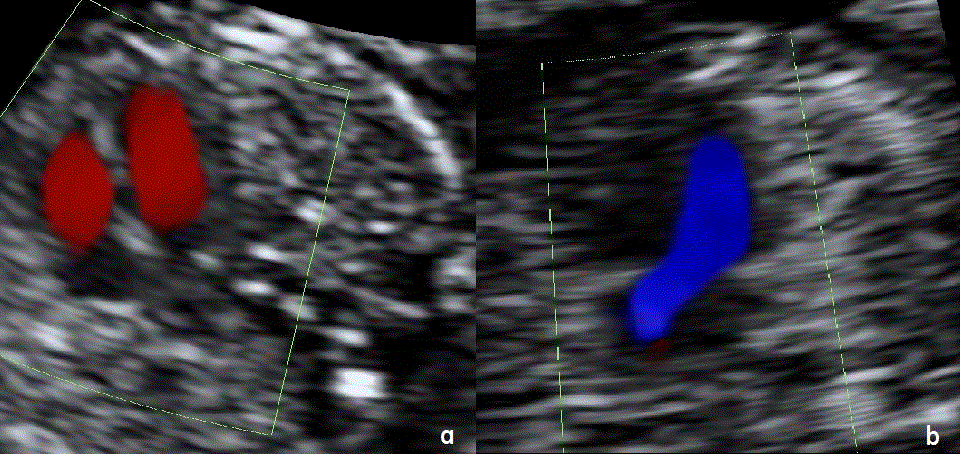 |
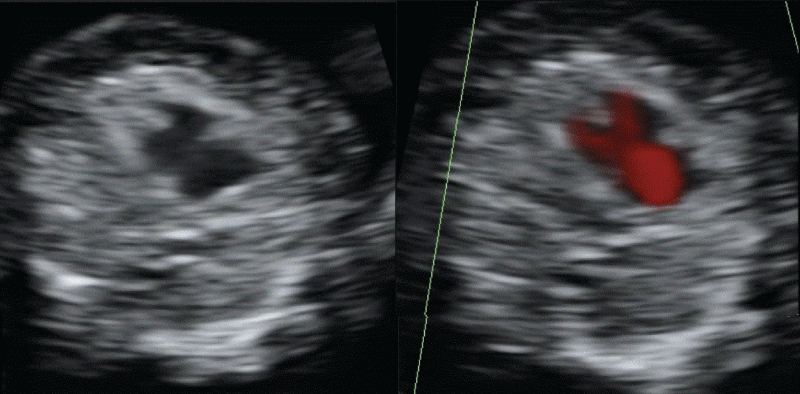 |
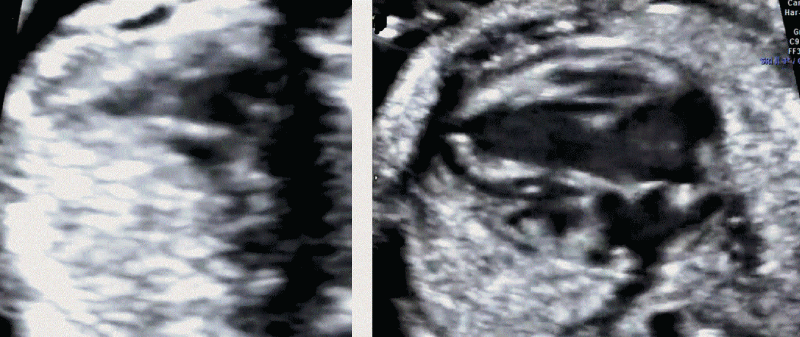 |
| Figure 5 | Figure 6 | Figure 7 | Figure 8 |
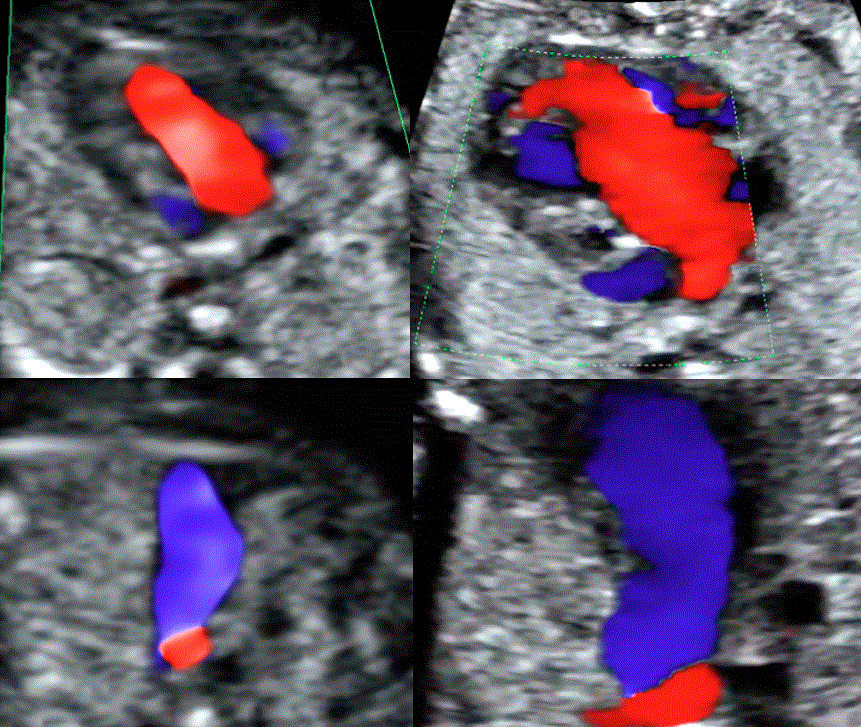 |
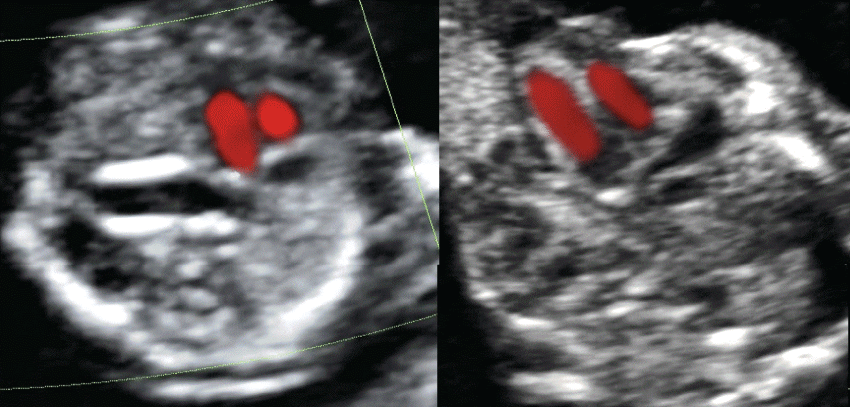 |
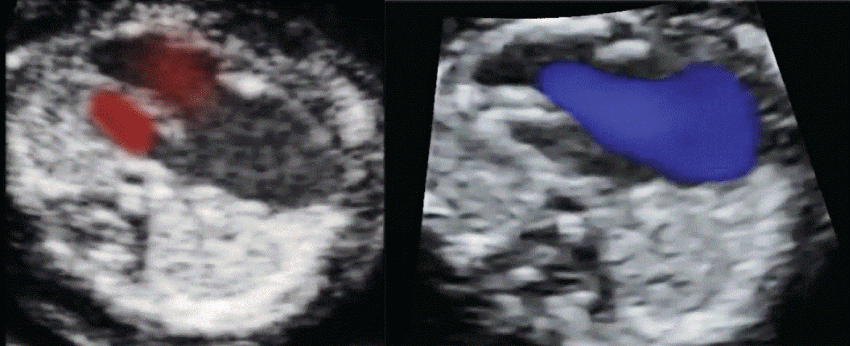 |
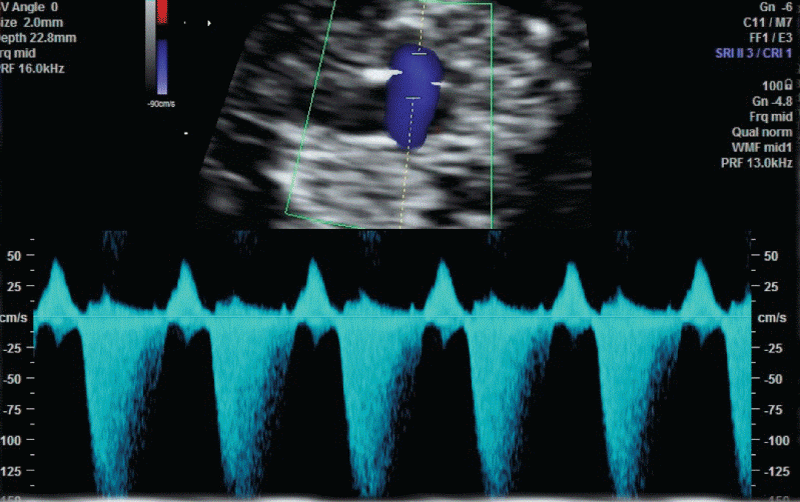 |
| Figure 9 | Figure 10 | Figure 11 | Figure 12 |
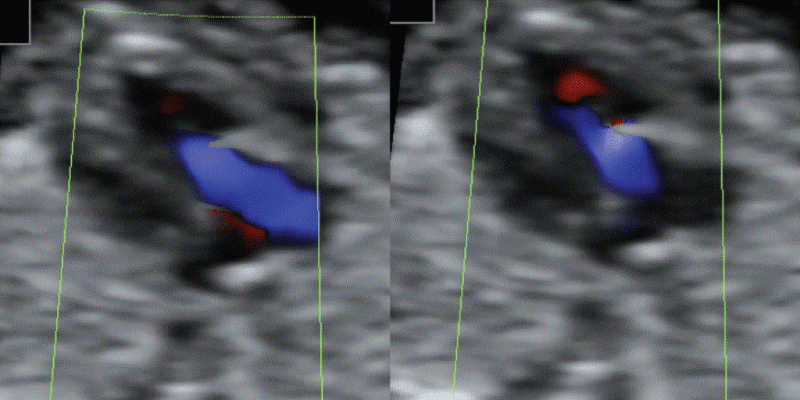 |
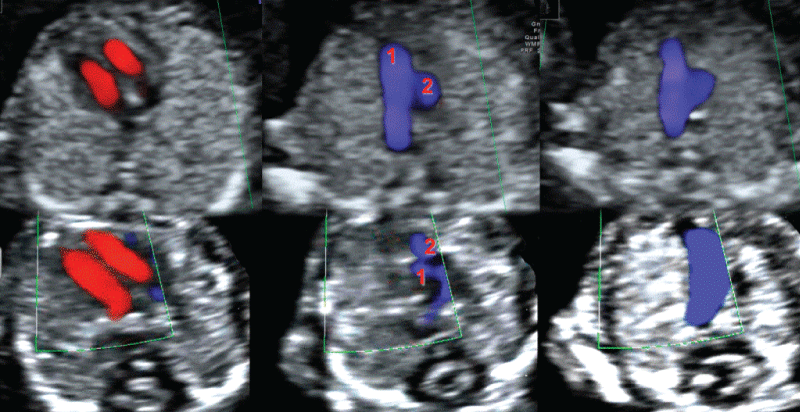 |
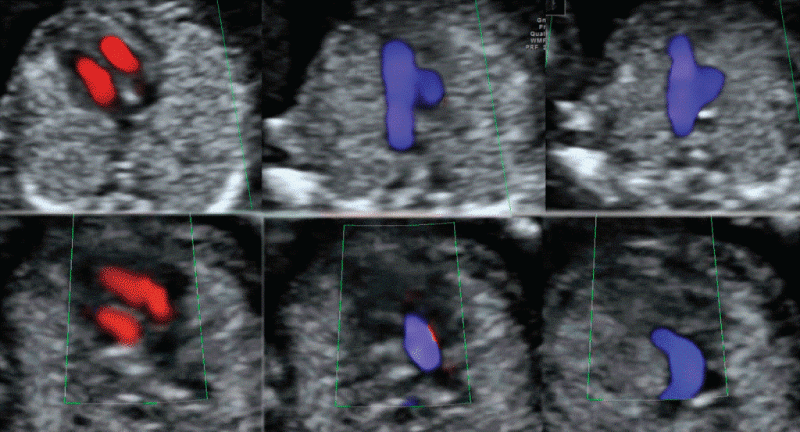 |
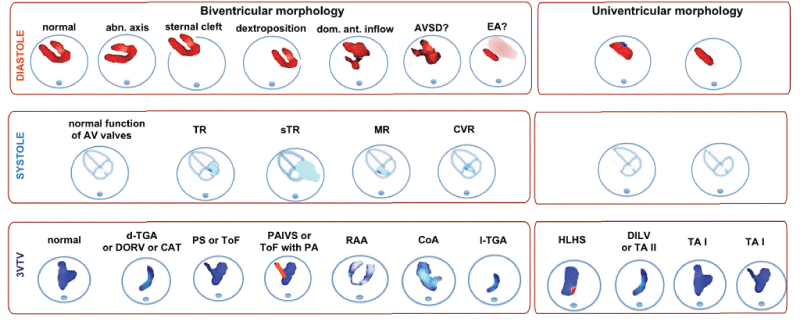 |
| Figure 13 | Figure 14 | Figure 15 | Figure 16 |
Relevant Topics
- Abdominal Radiology
- AI in Radiology
- Breast Imaging
- Cardiovascular Radiology
- Chest Radiology
- Clinical Radiology
- CT Imaging
- Diagnostic Radiology
- Emergency Radiology
- Fluoroscopy Radiology
- General Radiology
- Genitourinary Radiology
- Interventional Radiology Techniques
- Mammography
- Minimal Invasive surgery
- Musculoskeletal Radiology
- Neuroradiology
- Neuroradiology Advances
- Oral and Maxillofacial Radiology
- Radiography
- Radiology Imaging
- Surgical Radiology
- Tele Radiology
- Therapeutic Radiology
Recommended Journals
Article Tools
Article Usage
- Total views: 15595
- [From(publication date):
October-2015 - Jul 15, 2025] - Breakdown by view type
- HTML page views : 10806
- PDF downloads : 4789
